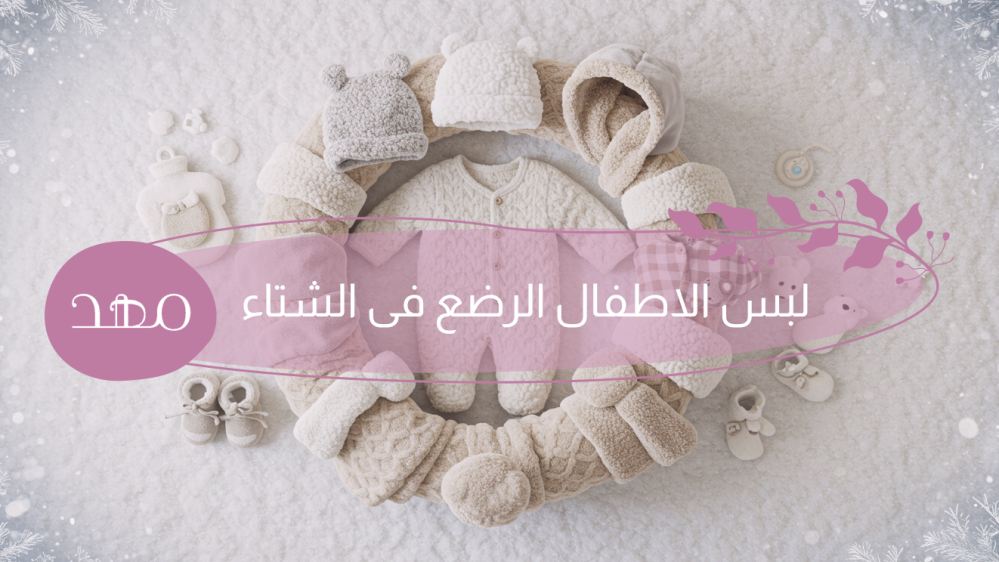As temperatures drop, mothers begin to wonder: What should infants wear in winter? Choosing the right clothes for an infant during the winter season isn't just about appearance; it's also directly linked to their health and safety. At this stage, babies need thoughtful warmth that ensures comfort without exaggeration. In these lines, we explain the basics that will help you choose the perfect winter clothes for your child.
What to wear for infants in winter? A comprehensive guide to protecting your little one from the cold.
With the onset of winter, mothers begin to worry about how to protect their infants from the cold. A newborn's immune system is still weak, and their body cannot regulate temperature like an adult's, so choosing the right clothing for this cold season is crucial. A common question among new mothers is: What should infants wear in winter ?
Why does an infant need special care in winter?
Before discussing what to wear for infants in winter, it's important to understand that an infant's body loses heat more quickly than an adult's and cannot maintain its body temperature as well. This makes them vulnerable to colds or sudden temperature changes. Therefore, appropriate clothing doesn't just mean keeping your child warm, but also protecting them from sudden changes in weather, whether indoors or outdoors.
Layering clothes is the golden rule.
When considering what to dress babies in winter, the most important rule to follow is "dress your baby in one more layer than an adult would." If you feel comfortable wearing a T-shirt and sweater, your baby needs an undershirt, overalls, and a warm jacket over them.
Layering helps you control your baby's temperature easily, as you can remove or add a layer depending on the weather.
Essential pieces for infant clothing in winter
To ensure your child is warm and safe on cold days, here are the most important items recommended for children's winter clothing:
- Long-sleeve cotton bodysuits are worn directly against the body, are comfortable and provide a warm first layer.
- Cotton overalls are an essential piece worn over a bodysuit, helping to keep the entire body warm.
- A wool jacket or sweater is an essential outer layer when going out or in cold weather indoors.
- Cotton or wool hats: A baby's head loses heat easily, so it's important to cover it, especially when sleeping or going out.
- Gloves and socks Hands and feet are the areas most exposed to the cold and should always be covered.
- Light blankets or quilted onesies for going out or sleeping. A blanket or onesies helps cover your baby without the need for more heavy clothing.
Dressing inside the house
Many mothers believe that babies should be wrapped up all the time indoors, but the truth is that dressing babies indoors in winter depends on the temperature in the room.
- If the room is warm (21–24°C), two layers are sufficient: a bodysuit and a cotton overall.
- If the room is cold, you can add a light sweater or cloth cover over the clothes.
It is not recommended to overheat your baby, as sweating may cause sudden chills, which makes him susceptible to colds.
Dress when going out
When leaving the house, dressing babies in winter is even more important, especially if the temperature is low. In this case:
- Make sure your head and neck are well covered.
- Use a quilted jumpsuit or a heavy blanket.
- Don't forget gloves and socks.
- Avoid direct exposure to cold air, and reduce the time spent outdoors as much as possible.
How do you know if a baby is warm enough?
To determine if your baby's winter clothing is adequate, you can check his body temperature around his tummy or neck. If it's warm and not sweaty, the clothing is appropriate. If it's cold, he may need an additional layer.
Hands and feet may be naturally cold in infants, so don't rely on them as a primary indicator.
Common mistakes in dressing infants in winter
- Exaggeration in the number of layers
- Too many layers can lead to sweating, rashes, and even increase the risk of sudden infant death syndrome (SIDS).
- Using blankets that are too heavy when sleeping
- Your baby may not be able to get rid of a heavy blanket if he or she gets too hot, so it's best to use light blankets or sleepsuits.
- Not ventilating the body after returning from outside
- You should change your outer clothing when you return home, to avoid sweating or skin infections.
Additional tips for choosing clothes for babies in winter
- Choose clothes made of natural cotton, as they are gentle on the skin.
- Avoid synthetic fabrics that may cause allergies or sweating.
- Make sure the clothing allows freedom of movement, especially around the neck and chest area.
- Don't forget to start preparing winter clothes for your baby before the birth, especially if the birth date falls during the cold season.
Winter requires special preparation, especially for infants who cannot express their feelings of cold or heat. Therefore, choosing infant clothing for winter should be carefully considered, based on comfort and safety, not just appearance or excessive warmth.
Keep your baby warm without overburdening him with too many layers, and don't forget to constantly monitor his condition to ensure he's protected, comfortable, and warm.

